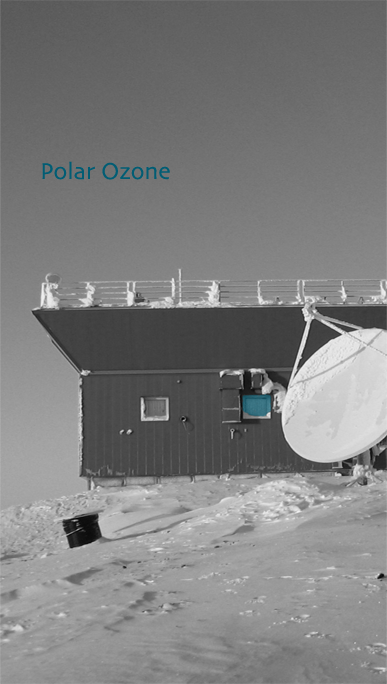The discovery of the ozone hole over Antarctica and later observations of mid-latitude ozone loss raised concerns over the possibility of similar ozone losses in the Arctic. Although the basic mechanism for polar ozone depletion is understood, there are several questions regarding the timing of Arctic ozone loss, its inter-annual variability and trends in the Arctic. Moreover, coupled chemistry-climate model simulations generated different scenarios in the Arctic (WMO, 2003).
Given the uncertainties in recent studies, both ongoing measurements of ozone and related gases and evaluation of atmospheric models using observational data sets are critical for improving our understanding of future changes.
We
deployed a UV-visible spectrometer four times at Eureka, Canada (80N, 86W) to study the stratosphere during the crucial winter-spring period, when ozone loss occurs.
built a four-year Arctic data set of ozone and related constituents and examined the relationship between chemical and dynamical fields.
determined the timing and extent of ozone loss over Eureka to unravel processes that cause ozone depletion.
established a collaborative relationship with modeling groups to contribute to improved modeling of the atmosphere.
More on my research
Nitric acid measurements at Eureka
NO2 vertical profiles
Related links
My PhD advisor - Professor Kimberly Strong
Introduction to ozone
Handbook of ozone depleting substances
All about ozone
